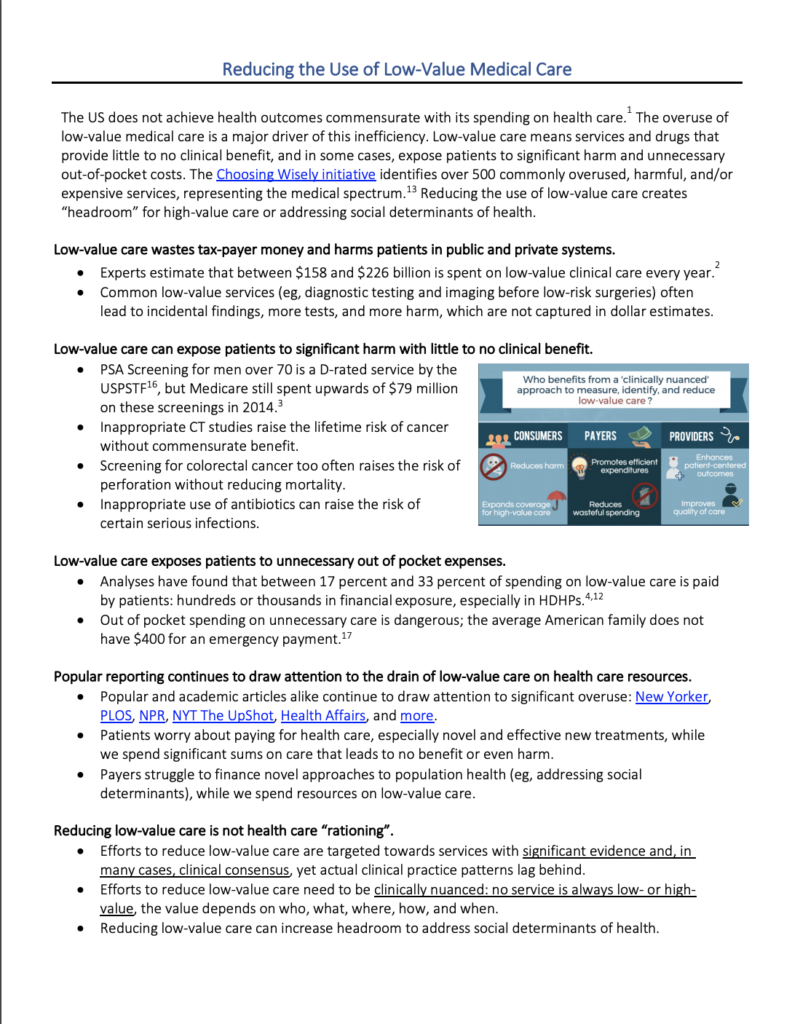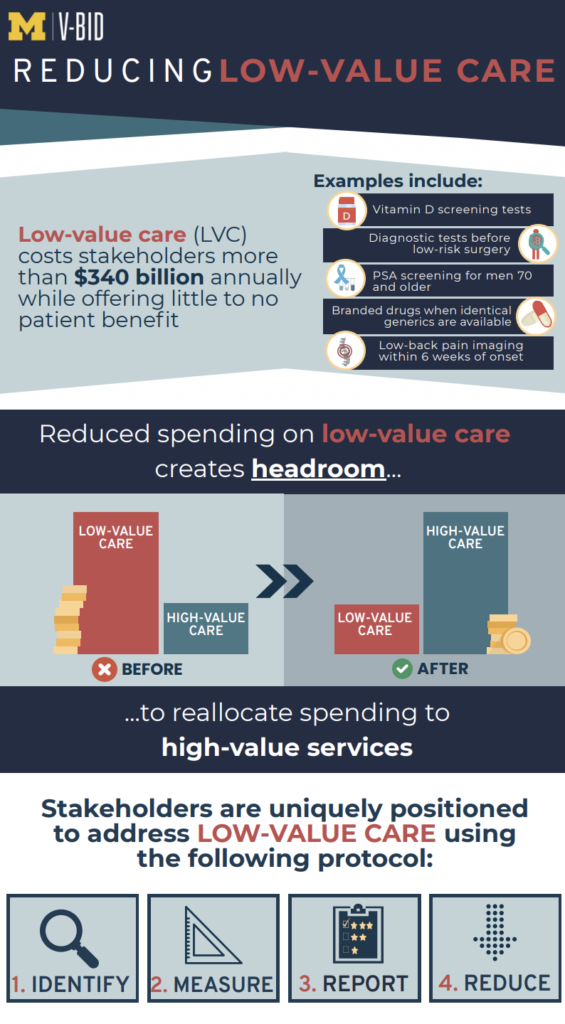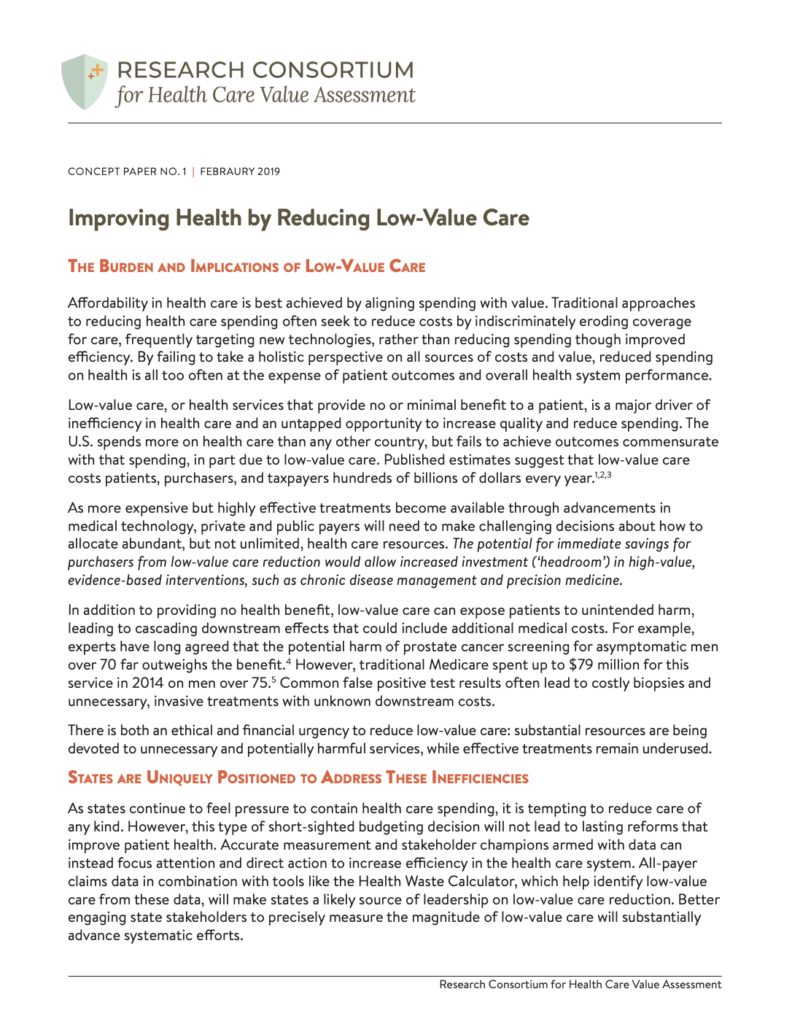Low-Value Care Reduction Toolkits

Background and Purpose of the Toolkits
Low-value care (LVC) is a major driver of inefficiency and an untapped opportunity to increase quality and reduce spending. We define LVC as services that provide no or minimal benefit to a patient in a specific clinical situation. Published estimates suggest that LVC costs patients, purchasers, and taxpayers hundreds of billions of dollars every year.
The purpose of these toolkits is to organize available tools and resources in one place. Multi-stakeholder efforts to reduce low-value care are a vital part of improving the efficiency of the health care system. The VBID Health low-value care reduction toolkits are designed to introduce purchasers, providers, and payers to the tools and information necessary to start a conversation about low-value care, measure low-value care, and take concrete steps to reduce utilization.
Overview of Toolkit Resources
The toolkits are a one-stop guide for low-value care. Tailored to each stakeholder, the low-value care toolkits contain a number of resources on how to address low-value care, such as tips and resources to:
- Develop a business case
- Communicate with a third-party administrator (for employers)
- Explore potential levers to reduce low-value care
- Finding data (e.g., data specifications for running claims-based analyses)
- Establish a communication plan with employees, covered lives, or patients
- Measure and share progress with others
Background on Low-Value Care
If you need support, tips, or questions regarding the toolkit, please contact us at [email protected]







